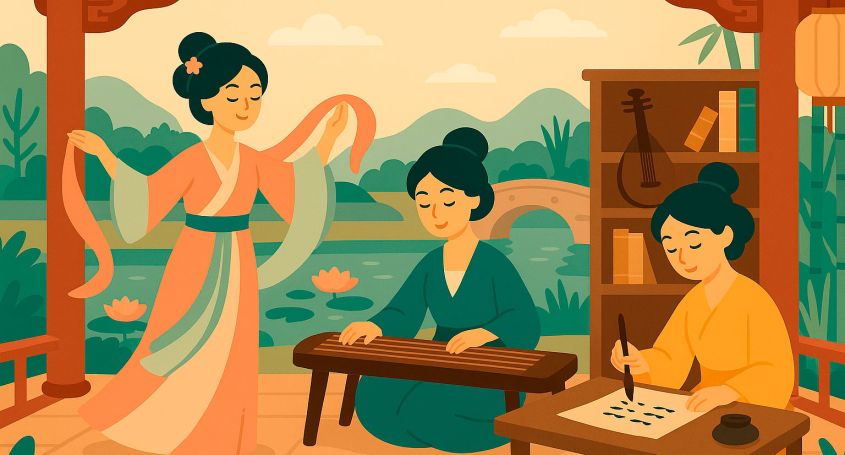The image of the geisha is usually associated with Japan。 However, in Chinese history we find similar prominent figures within the arts and entertainment: the 歌妓 [gējì], the 乐妓 [yuèjì], and the 名妓 [míngjì]. These three categories emerged during the Tang (618–907 CE) and Song (960–1279 CE) dynasties and describe women who worked as artists (singers, musicians, and poets). They performed before the imperial court, wealthy audiences, or at private, generally all-male gatherings.
Despite their artistic skills, they had a low social status, and they were considered 賤民 [jiànmín], which literally means “worthless people.”
These women were also associated with prostitution, as often their work as artists included sexual favors for the men who hired them.
歌姬 [gēji]: singers
They were female artists who dedicated themselves to singing, acting, and dancing. They sang both arias and popular songs. The most famous geisha was Li Shishi (1062–1127), who had an affair with Emperor Huizong.
![歌姬 [gēji]: singers](https://marteagency.com/img/geisha_china_geji_singers.jpg)
|
乐妓 [yuèjì]: musicians
They were professional musicians who played traditional instruments such as the 古筝[guzheng] or 箏 [zheng] (a sixteen-string zither, below) and the 琴 [qin] (a seven-string zither).
![乐妓 [yuèjì]: musicians](https://marteagency.com/img/geisha_china_geji_musicians.jpg)
|
名妓 [míngjì]: poets
The 名妓 wrote poetry, were experts in calligraphy, and some even gained political and social influence through their connections.
![名妓 [míngjì]: poets](https://marteagency.com/img/geisha_china_geji_poets.jpg)
|
Unlike Japanese geishas, in China their training was less institutionalized, and therefore their professions were less regulated and had a worse reputation.
We could conclude then, that although there were technically no geishas in China in the Japanese sense of the term, there were female artist-courtesans who practised various cultural and literary skills and played an important role in the cultural context of different eras.





